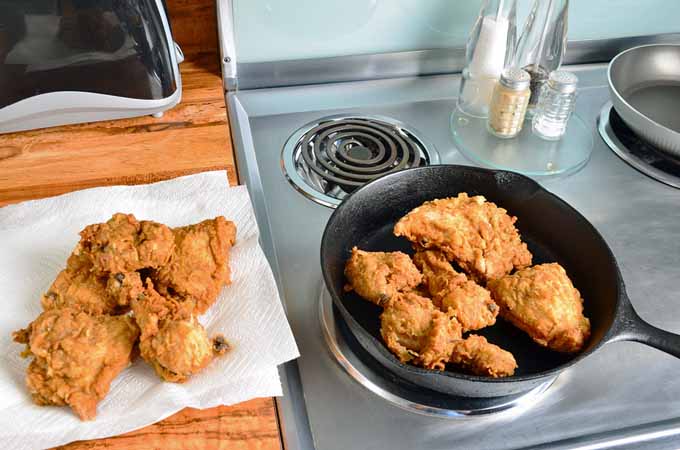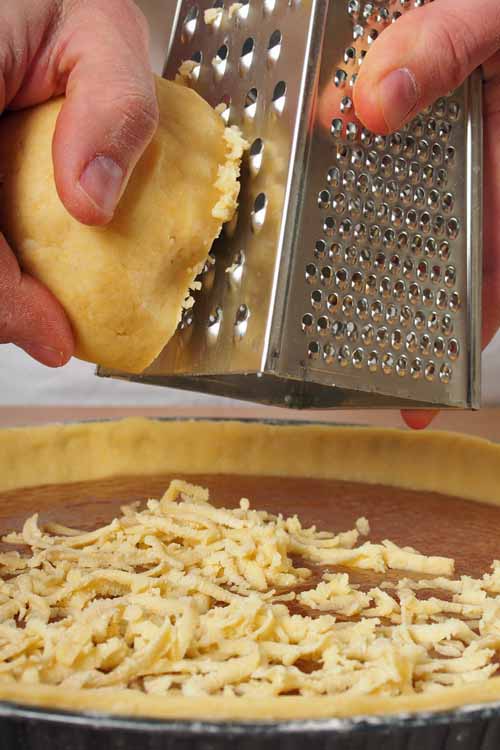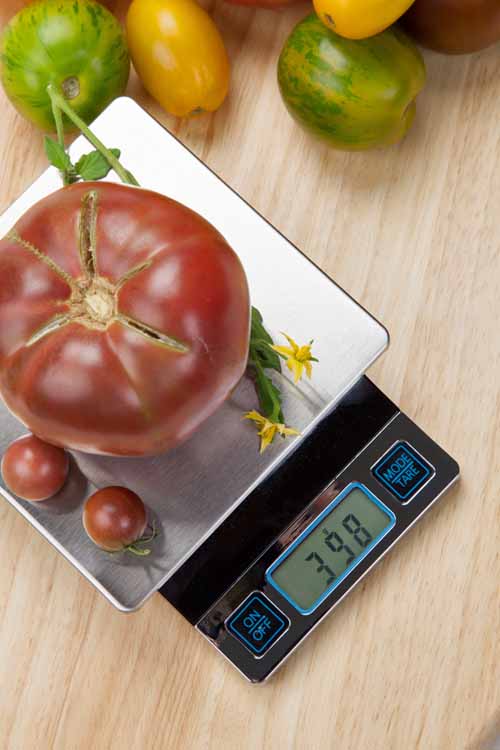In a recent post, we reported on how to start a new, healthy cooking habit and get past the common excuses we use for not beginning.
In this post, we’re going to cover the basic gear you’ll need to put your new habit into practice.

Whether you’re setting up a kitchen for the first time, or simply want to do a bit more cooking, having the basic gear is an essential part of success. Not only does it make cooking easier, it also makes it more enjoyable.
You don’t need to buy out Ikea, nor does your selection have to be the most expensive. Get the best quality for your budget, and build from there.

Here are the basics:
1. Cast Iron Skillet
Having two is better, one large and one small. If you can only swing the price of one, go for the larger version.
For the beginner, a cast iron or a thick, carbon steel skillet is a better option than a nonstick version, because it won’t wimp out when mistreated the way nonstick cookware does – although you must take some measure of care and not mistreat them by soaking them in water.

The great thing about these type of pans is their huge versatility – they can be used from everything to frying up a chicken southern style to putting an awesome sear on a steak, to baking a cobbler or a deep dish pizza.

And if you’re on a really tight budget, check out garage and estate sales for cast iron cookware. When well maintained, these beauties last for decades.
Check out Foodal’s Cast Iron Cookware Guide now.
In terms of skillets, however, there’s a lot more choices beyond just cast iron. Feel free to explore which type of frying pan you think would be best for you.
2. Roasting Pan
A roasting pan is another important piece that can perform multiple tasks.

Beginner or expert, quick and easy meals are important for every cook, and a roasting pan is the perfect vessel for one-pan meals. It can also be used as a casserole dish with some foil for a lid, and will serve as a baking sheet in a pinch.
Find out more and take a look at Foodal’s Roasting Pan Guide.
3. Colander
A stainless steel version with handles is optimal.

Make sure it’s sturdy enough for handling hot ingredients, like straining pasta, as well as rinsing salad greens, veggies, berries, and so on.
Read more about how to pick the best model now.
4. Mixing Bowls
A nesting set of three will do to start with. Stainless steel, glass, or food-grade plastic – the materials are up to you.

Besides their standard duties including mixing baking ingredients, tossing a salad, and marinating meats, they can double up as serving bowls.
5. Box Grater
Not as chic as a microplane zester, but much more versatile with three grating sizes, plus a slicing side.

Use the small caliber for zesting citrus, and grating ginger, nutmeg, and chocolate. The medium and large-sized holes can be used for grating root veggies for sauces and soups, and hard cheese. And the slicing side is good for shredding items like cabbage, onions, and soft cheeses.
Read Foodal’s Box Grater Guide now.
6. Saucepans
One small and one large, with about 1- and 3-quart capacities.
The small one is great for creating sauces or cooking up rice, quinoa, or couscous. The larger one will handle pretty much everything else, such as pasta, veggies, and sauces.

Or a steamer rack can be placed inside, for cooking those ingredients that you plan to steam.
Again, if you can only afford one, go for the larger size.
We prefer tri-ply pans made by All-Clad, but copper and even non-stick are great options as well.
7. Steamer Rack
Either stainless steel or bamboo.

If better nutrition is one of your reasons for learning to cook, a steamer rack is essential, as steaming veggies retains more nutrients than boiling. Just make sure it will fit into your large saucepan with the lid on.
8. Utensils
These can often be purchased in sets if you’re looking for value.

To get started, you’ll want a set of a wooden spoons, a spatula, vegetable peeler, can opener, whisk, and a ladle. Add more pieces to suit your cooking techniques as you go along.
9. Knives
Having a knife for every function isn’t absolutely necessary – two will do.
A chef’s knife and a petty blade, such a paring or small utility knife, will be able to achieve all of the standard kitchen tasks for beginners.

Be sure to handle the chef’s knife before purchase if you can, or pay close attention to the measurements to ensure it’s a good fit for you in terms of weight, balance, and maneuverability.
Get the best quality you can, and add a honing rod to your set if possible.
Check out all of Foodal’s kitchen knife guides and reviews now.
10. Cutting Board
Wooden or plastic are the kindest on your knives – stay away from those made of marble, granite, or glass.
Marble is better for rolling out buttery pastry dough, since the cool, smooth surface will help to keep it from melting.

Read Foodal’s Guide to Finding a Knife Friendly Cutting Board now or see all of our cutting board guides and reviews.
11. Measuring Cups and Spoons
Using the correct measurements in a recipe is crucial for success in baking, and for the beginner in particular.
And as there’s a difference between dry and liquid measures, having a set for each is recommended.

A cup for liquids should have the measuring line well below the rim, so none of it spills as you move the cup from counter to mixing bowl.
Cups for dry ingredients are meant to be filled right to the lip, then swept with a straightedge for precise measurements.
Eyeballing amounts and making guesstimates are for those with more experience, and should be diligently avoided by the newbie foodie.
Not Absolutely Necessary, But Smart to Have…
A clever way to kit out your kitchen is to model the tools experienced cooks rely on.
Here’s a couple for your wish list – ones that savvy kitchen mavens depend on for eliminating uncertainty, and producing consistently satisfying results.
A Meat Thermometer
This takes away the guesswork when grilling or roasting meat and poultry, and ensures that your proteins are done to perfection. It’s an inexpensive bit of gear that will boost your confidence by leaps and bounds.

Find more information about these handy devices.
A Digital Food Scale
This is a much more accurate method for measuring all ingredients, except for liquids.

Dry ingredients measured by volume (i.e. using measuring cups) can vary wildly in weight – for example, a cup of flour scooped from a canister will weigh considerably more than a cup of sifted flour. And this can make a huge difference in the outcome of a recipe.
As more and more recipes give both volume and weight measurements, investing in a kitchen scale is a wise choice.
A Stockpot
A larger version of a saucepan, these vessels are ideal for preparing stock and broths, but are also great for making all sorts of soups and stews.

It’s great to have one in the 8-quart range, and another in the 16-20 quart range for when you’re feeding a crowd, or want to make freezer meals for those busy times.
Comfortable Kitchen Footwear

Though kitchen clogs aren’t at the top of every budding home chef’s wish list, they can go a long way towards preventing injury, and combating back pain that might come as the result of long hours spent in front of the stove.
Summary
Having the basic tools and equipment on hand will help to make your cooking experiences easier, more fun, and more successful.

And a little bit of success at the start will go a long way towards developing your cooking habit.
To the beginners, if you have any questions, ask away – we’re happy to help!
And for you cooking pros out there, are there any suggestions you’d like to add to the list? Let us know in the comments below!
Photo credits: Shutterstock, except where otherwise indicated. Photos by Mike Quinn, © Ask the Experts, LLC. ALL RIGHTS RESERVED. See our TOS for more details.
About Lorna Kring
Recently retired as a costume specialist in the TV and film industry, Lorna now enjoys blogging on contemporary lifestyle themes. A bit daft about the garden, she’s particularly obsessed with organic tomatoes and herbs, and delights in breaking bread with family and friends.






Definitely a helpful list.
As a student living abroad, I have to make do with what I have and what I inherit by other students that leave, but I still go out and get a specific cooking utensil every once in a while.
Knives I feel, really are important in almost anything you do, and so with it I think a knife sharpener would also really be helpful.
I actually had a steamer rack lying around, but had no idea what it was used for, or even what it was called.
Thanks for the list, and I feel I’m going to be steaming some vegies soon.
So true Splader – dull, ineffective knives do nothing to induce someone to stay in the kitchen! Thanks for your thoughts, and enjoy those steamed veggies.
What a wonderful list of items every beginner should have. I have all of those things in my own tiny kitchen, so it’s no wonder that I enjoy cooking so much. I particularly like my wooden spoons and I have quite an extensive collection of them. They just seem to be exactly the right size for everything I want to do so I keep going back to them. As for mixing cups, I’ve found that I can never have too many of those. I have several, in all different sizes and styles, both for dry and liquid ingredients and I use them constantly, particularly in baking.
Having the right tools is so important for good results and greater enjoyment – it’s a big part of what keeps us coming back! Thanks for sharing your insights Novelangel.
I love kitchen tools, and this is a very interesting post, it will help people who want to start making their own meals to pick the right tools . I own every single tool you mentioned, except the meat thermometer, but I’m planning to buy it soon.
You are right about cast iron skillets, they are a very valuable asset in the kitchen. I own several nonstick pans but I mostly use my cast iron skillets, they are very versatile.
You are right about cutting boards too, wooden and plastic are the best. I made the mistake in buying a glass cutting board because it looked pretty. I used it a few times and now it lies unused on my counter, as a decor piece.
I covet my cast iron pieces too Snarya! Bummer about the pretty glass cutting board, but maybe you could use it as a trivet for casserole dishes or roasting pans…
Those were some very accurate tips for beginners.
I have to say that although cast iron kitchen equipment might be a tad bit expensive, in the long run they are a really good investment because they last long and can even go generations down if used and cleaned with care.
However, as a beginner I substituted cutting boards with plain shallow (almost completely flat) plastic plates that I already had in my cupboard. They doubled as both ingedient plates as well as cutting boards. A wooden cutting board is good to have though if you need a wooden surface at arms lenght for recipes that require it such as making sushi rice.
Another handy thing to have around as a beginner is a cutting blender (a closed one or a handheld one), this will liberate one’s hands in mincing ingredients into really fine pieces, like making a pulp out of tomatoes, fine-cutting nuts and seeds or simply making smoothies. It is a little tedious to clean these devices afterwards but it certainly beats crushing stuff by hand on a mortar.
All good tips Mansa, thanks for helping out the newcomers to cooking!
Great list. Would be ideal as a wishlist for people just starting out. I know the tendency is to skimp on some items, but never ever skimp on the knives. Save and/or wait for sales but get good solid cutlery. And don’t forget good trivets so as not to mess up counter tops and tables and silicon pot holders & oven mitts to keep hands safe.
A good knife makes the cooks’ job so much easier! Good ideas about the trivets too, and the safety gear – very important.
I have heard that plastic cutting boards are better because the wooden ones make it easier for bacteria to linger and grow.
As a single guy, I would put Tupperware containers very high on the list. I love to cook and to make complex meals, so my tupperware gets more use than almost anything in my kitchen. The other thing I use a ton is a small handheld juice strainer since I use a lot of lemon, orange and other squeezed juices while cooking.
Your list is awesome, and would be useful as part of a wedding registry or something like that.
Tupperware, of course! Much used for leftovers and the freezer… thanks for adding to the list Azrile.
When I saw meat thermometer I knew this article meant business. I mean, how car you ever cook a roast or thick cut steak to your liking without one? Not to mention the food safety benefits of having one around for poultry and pork. I prefer the electronic leave-in type, because it lets you know when the food is done right away with zero guesswork.
Guesswork is definitely hard on the new cook NEC, and a meat thermometer just makes cooking so much easier. Thanks for your thoughts!
This is a great list for people building their first kitchen, or people like me who are paring down to just the essentials. For me though, I’d have to put the stock pot up higher on the list. Actually I prefer a large Dutch oven which can pretty much be used for the same things and more.
Very true Lynk, everyone should have a Dutch oven or stock pot… they’re certainly a worthwhile investment, and so very versatile!
Being a man, I’m pretty typical when it come to cooking, I can’t cook, I’m scared of it spitting at me and I burn everything.
Pouch pasta? Can’t even do that.
So thanks for this, maybe it can give me a few tips to make the girlfriend happy haha.
My dads a good chef, I guess I’m just messed up in the genetics department.
We all have to start somewhere jahroberts, and then it’s just practice… and after a while, you’ll be a master! Thanks for your comments.
I have always wanted a cast iron skillet, but all of the ones I’ve found are so pricey. I’ll definitely need to go to some more garage sales, I’m sure I’ll be able to find a reasonable one eventually; or just bite the bullet and pay full price so I can get my hands on one! I never thought of how versatile it could be, I always imagined just cooking on the stove top with it, what a great idea to bake in it too! That blueberry cobbler looks so good.
I’m all about multi-tasking and using the least amount of dishes as possible (totally not because I hate doing dishes.) When using a steamer rack, could I sit it inside of a pot I’m boiling something in, like pasta or eggs? Or would the vegetables or whatever else I’m steaming make what I’m boiling taste odd?
I would be a bit leery of crossing flavors when steaming/boiling together shellatin, and it would be awkward to check the contents being boiled with a full steamer in place as well. Personally, I’d dirty another pot…
And good luck with your cast iron skillet quest, they’re an amazing piece of cookware!
You forgot about the potato peeler, it’s actually one of the most useful pieces of gear when it comes to cooking and that sort of thing. We always have one around because it’s really useful for pretty much anything at home, especially for peeling potatoes, of course. This was such a good article for those who are starting in the cooking world, thanks a lot for sharing this. It’s really appreciated.
Of course, the potato peeler! Good one Casiox, thanks.